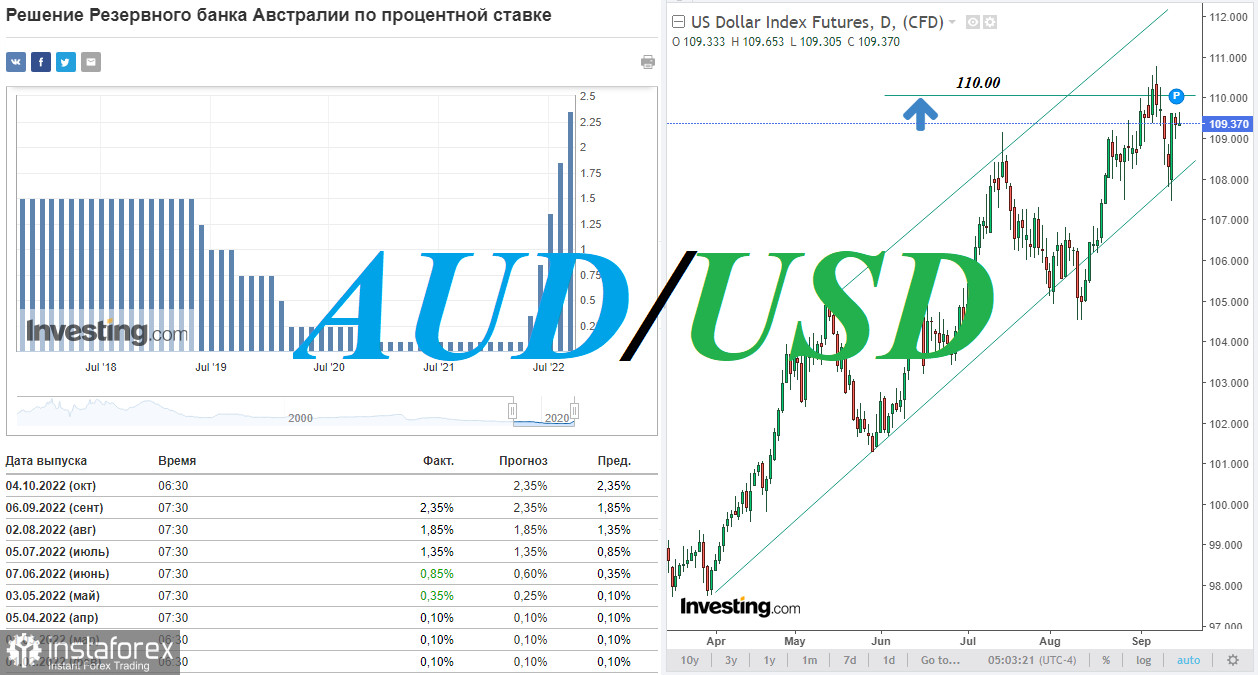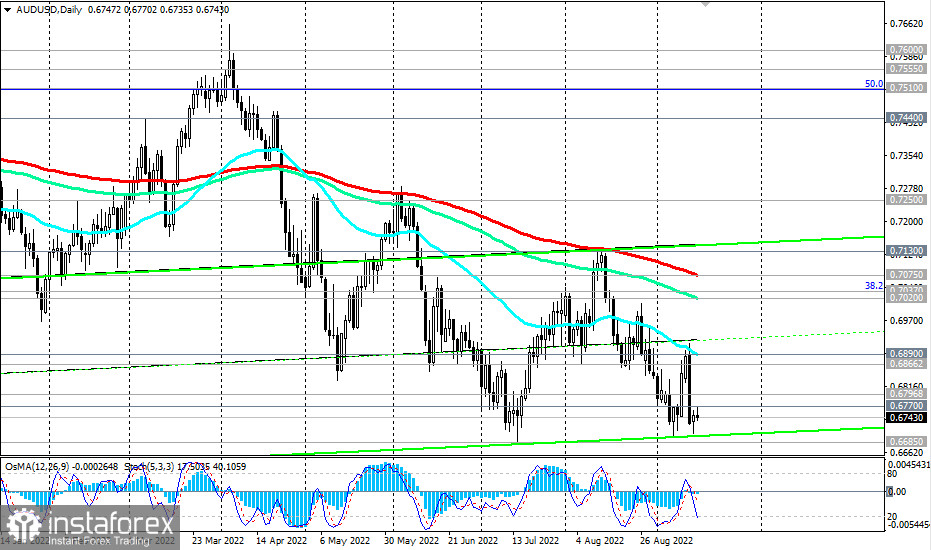
This morning, not very positive data on the Australian labor market came out. The report from the Australian Bureau of Statistics showed that unemployment rate rose in the country in August to 3.5% (against the forecast and the previous value of 3.4%), and employment increased by +33,500 employed Australian citizens, which also turned out to be weaker than the forecast of growth by +35,000.
The data indicate a lack of momentum in the development of the country's labor market. This, in turn, may negatively affect the decision of the RBA leaders to tighten monetary policy, despite rising inflation in the country.
Earlier this month, the RBA decided to raise the rate by 50 bps. Given that other major global central banks, including the Fed, are moving in larger steps by raising their interest rates by 0.75%, as well as weakening investors' desire to buy risky stock market assets, it is logical to assume the weakening of the Australian dollar in the near term, including and in the AUD/USD pair.
Economists also say that the RBA interest rate is now near the neutral rate, which also suggests that the RBA will soon slow down the rate hikes, while the Fed will likely continue to tighten its monetary policy further.
Thus, a further decline in AUD/USD should be expected. As of writing, it is trading near the level of 0.6740, moving inside the descending channel on the weekly chart and remaining below the key resistance levels at 0.7250, 0.7075. The breakdown of local support at 0.6700, 0.6685 is likely to become a driver for further decline in AUD/USD.

Today, another block of important macro statistics for the United States will be published. The US Department of Labor's weekly report will show data on jobless claims, and the Census Bureau's report will show data on retail sales. The state of the labor market (along with GDP and inflation data) is a key indicator for the Fed in setting its monetary policy parameters, while the retail sales report is the leading indicator of consumer spending, which accounts for most of the total economic activity of the population (domestic trade accounts for the largest part of GDP growth).
Positive data is expected, and upon its confirmation, we should expect the strengthening of the US dollar. And vice versa, weak US macro data will cause a new wave of a downward correction in USD.
 English
English 
 Русский
Русский Bahasa Indonesia
Bahasa Indonesia Bahasa Malay
Bahasa Malay ไทย
ไทย Español
Español Deutsch
Deutsch Български
Български Français
Français Tiếng Việt
Tiếng Việt 中文
中文 বাংলা
বাংলা हिन्दी
हिन्दी Čeština
Čeština Українська
Українська Română
Română

